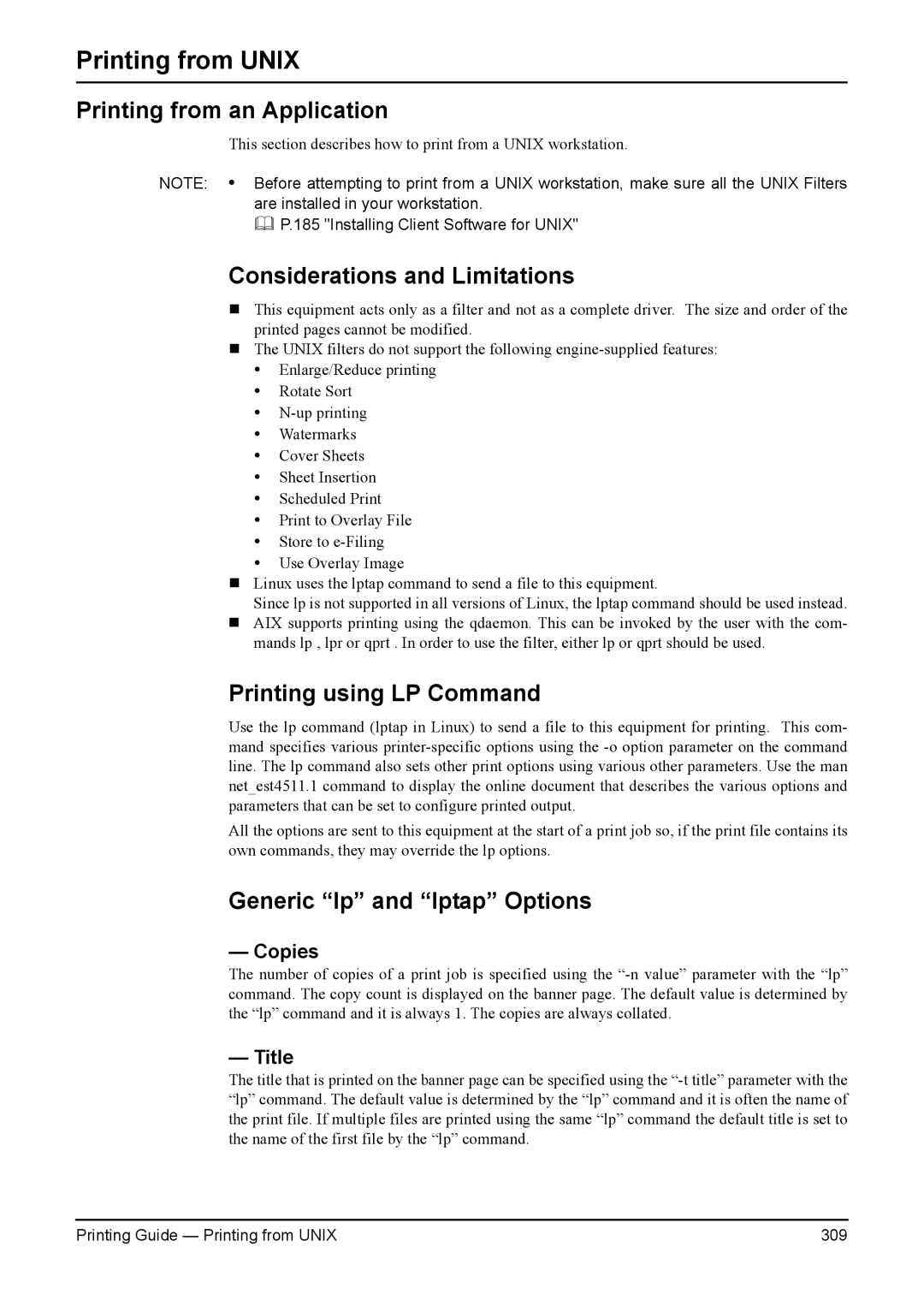
Printing from UNIX
Printing from an Application
This section describes how to print from a UNIX workstation.
NOTE: • Before attempting to print from a UNIX workstation, make sure all the UNIX Filters are installed in your workstation.
P.185 "Installing Client Software for UNIX"
Considerations and Limitations
This equipment acts only as a filter and not as a complete driver. The size and order of the printed pages cannot be modified.
The UNIX filters do not support the following
•Enlarge/Reduce printing
•Rotate Sort
•
•Watermarks
•Cover Sheets
•Sheet Insertion
•Scheduled Print
•Print to Overlay File
•Store to
•Use Overlay Image
Linux uses the lptap command to send a file to this equipment.
Since lp is not supported in all versions of Linux, the lptap command should be used instead.
AIX supports printing using the qdaemon. This can be invoked by the user with the com- mands lp , lpr or qprt . In order to use the filter, either lp or qprt should be used.
Printing using LP Command
Use the lp command (lptap in Linux) to send a file to this equipment for printing. This com- mand specifies various
All the options are sent to this equipment at the start of a print job so, if the print file contains its own commands, they may override the lp options.
Generic “lp” and “lptap” Options
— Copies
The number of copies of a print job is specified using the
— Title
The title that is printed on the banner page can be specified using the
Printing Guide — Printing from UNIX | 309 |
